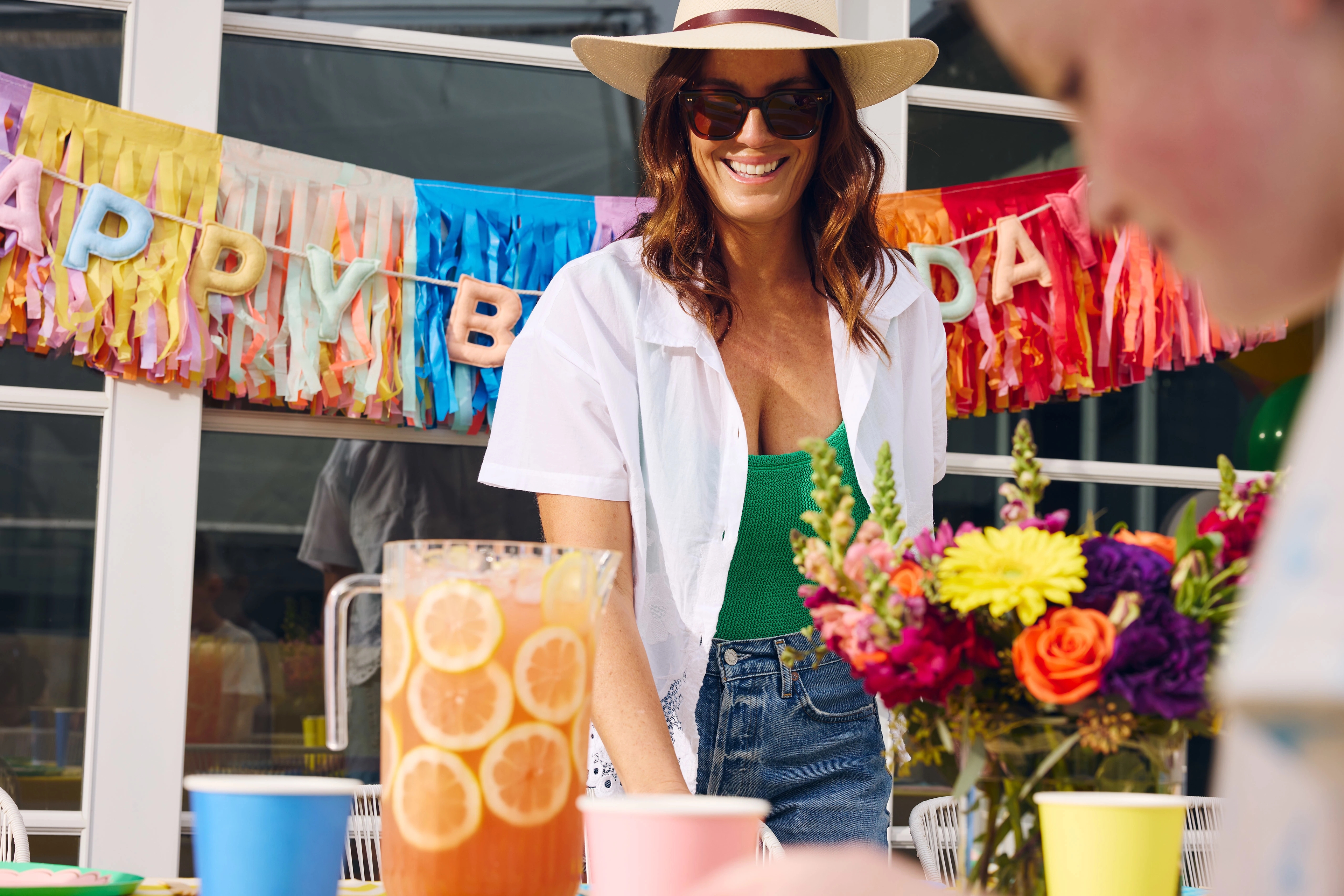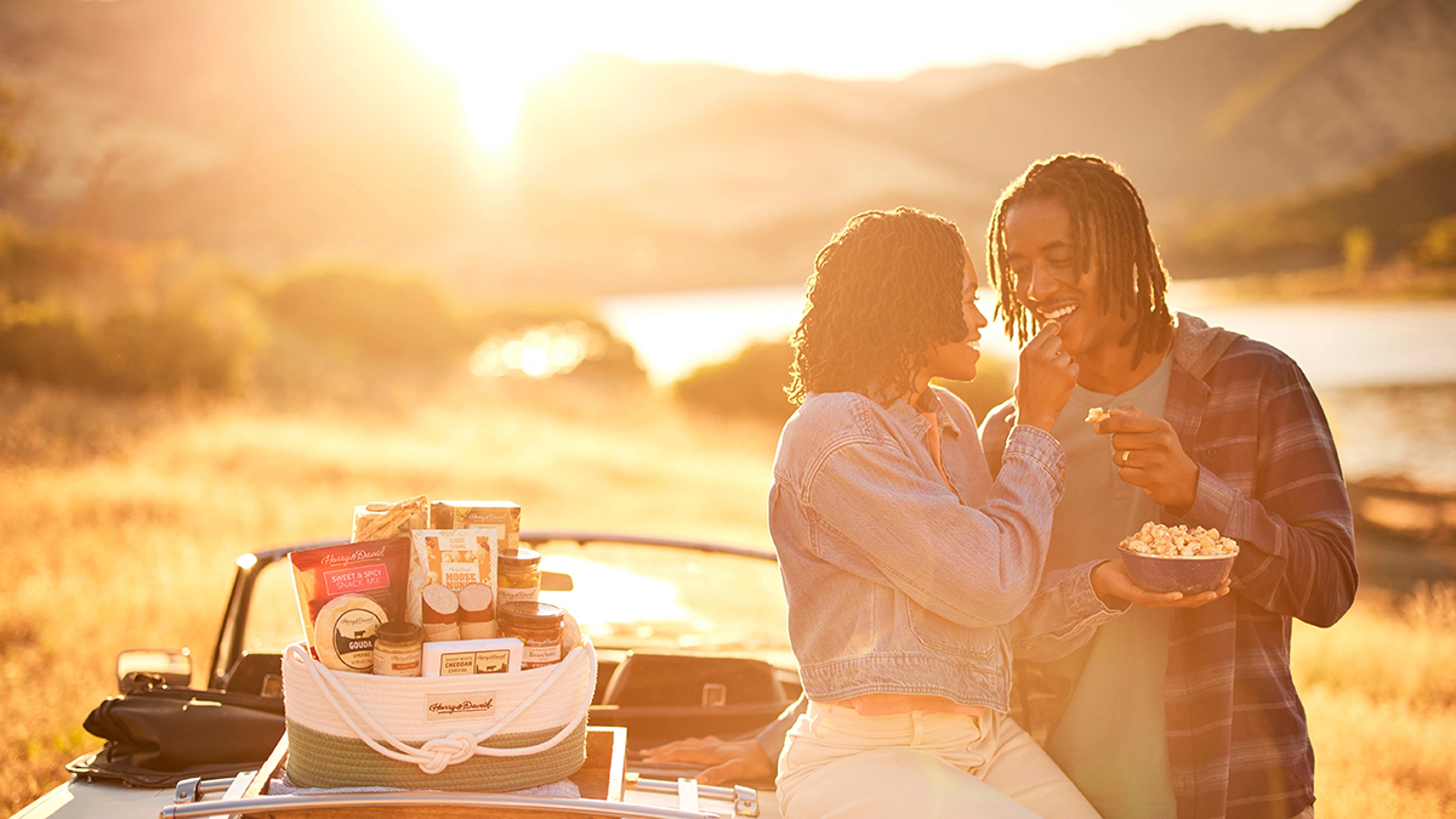The Art of Coffee: How to Brew a Perfect Cup of the Planet's Most Popular Drink
Here's everything you need to know about making everyone's favorite hot (or cold) beverage.
Jan 29, 2025
Whether you call it joe, java, or wake-up juice, one thing is certain: Coffee is a beloved beverage throughout most of the planet. But did you know that coffee is more popular in the United States than water? It's true! A 2024 report from the National Coffee Association (NCA) found that 67% of men and women say they consume coffee daily — a ranking that even life-sustaining water can't beat!
The people's drink
Just how great is our thirst for java in all its forms? Statista reports that Americans consume more than 740 million pounds of coffee beans each year. That's more than 500 million cups of coffee brewed in America daily, or more than 180 billion cups of caffeinated rocket fuel served annually.
And believe it or not, as much as we love coffee here in the States, we're not even among the world's top 10 coffee-loving countries. Folks in Finland, Sweden, Norway, Canada, Lebanon, Germany, Brazil, Qatar, Switzerland, Italy, Estonia, and Portugal all drink coffee more frequently and in greater volume than we do in America. And in the world's top coffee-chugging nation, the Netherlands, annual coffee consumption comes in at more than twice what we drink in the U.S. per capita. Talk about a caffeine high!
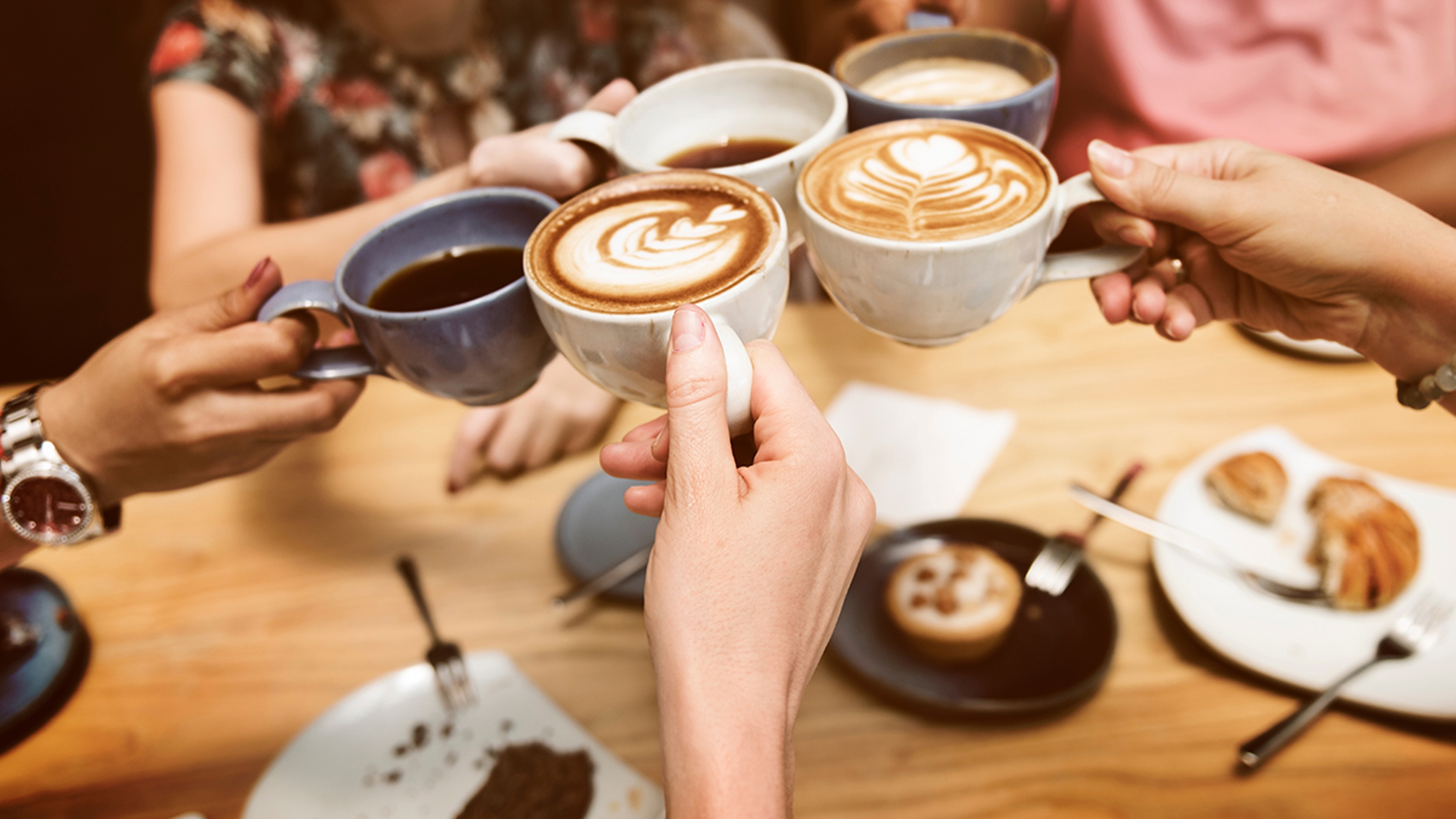
So, why is coffee so darn popular? Most experts attribute its essential place in modern society to its combination of flavor, potent caffeine punch, and overall versatility.
“Coffee beans are grown in a vast number of places, so the drink is embedded in many cultures," says Mike McKim, founder and CEO of Cuvée Coffee in Austin, Texas. “Coffee can also be enjoyed by people of all ages [except kids under 12], it can be consumed straight or used as an ingredient in other drinks, it's affordable, and it can be customized to every palate, from straight espresso to a 20-ounce drink loaded with flavors, sugar, milk, and whipped cream."
It's also part of most people's daily habits and routines, says Andy Whitticar, merchandise manager of specialty foods for Harry & David. “It's hard to beat the comfort and satisfaction people get from the ritual of opening a bag of coffee each morning, smelling the grounds, and then sitting down with a cup of coffee to start their day."
How to make coffee
Making a great-tasting cup of coffee is an art, and, just as every artist will tell you, there is no exact recipe for creating a perfect painting — or, in this case, the ideal cup of coffee. Variables like the type of coffee beans you buy, how the beans are roasted, the type of water available, what brewing technique you use, as well as your own personal tastes (Do you like your coffee weak or strong? Black or with added cream and sugar?) all can impact the quality of the coffee you make.
That said, here are six basic and easy guidelines to follow that will increase your chances of making a great tasting cup of coffee.
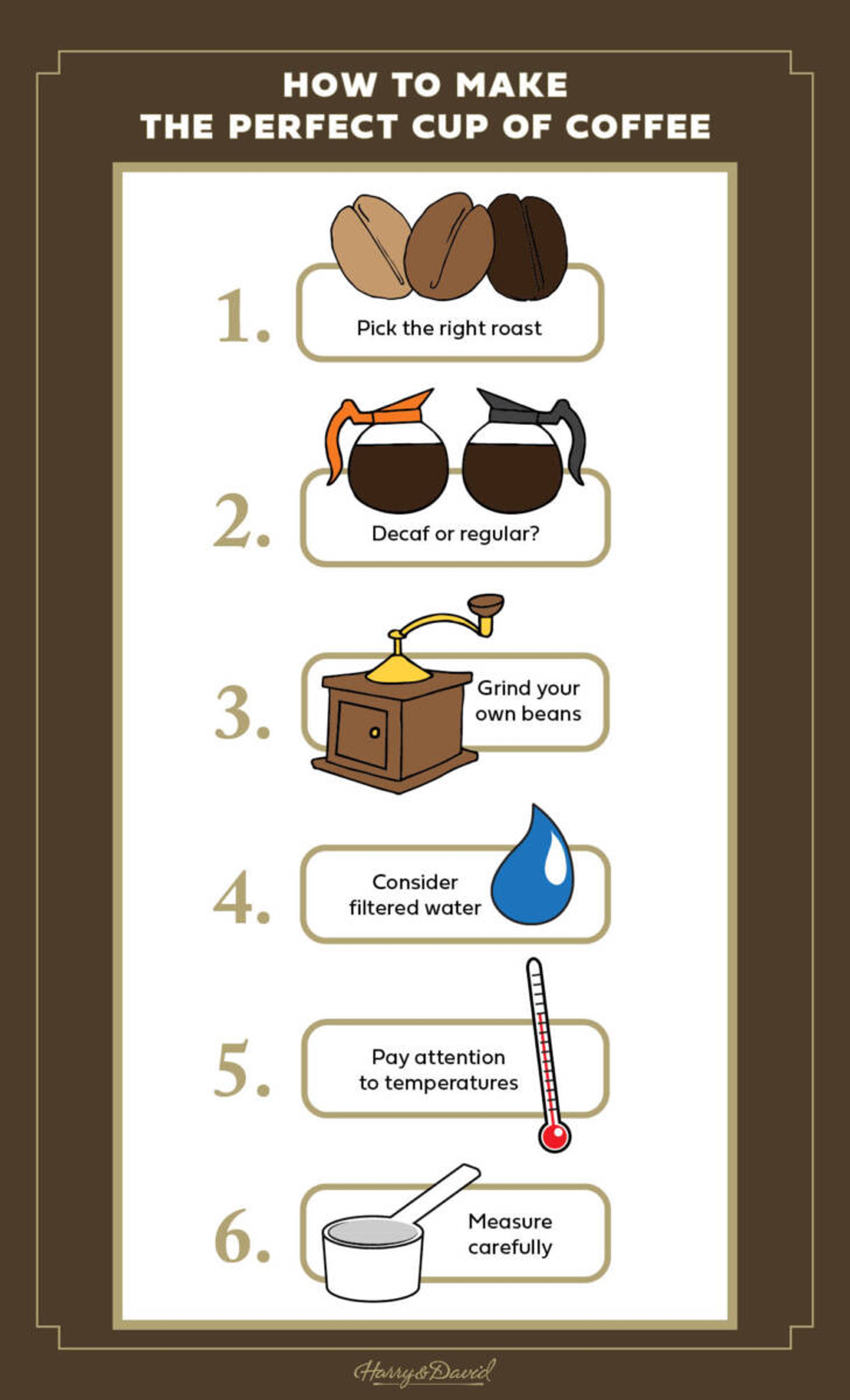
1. Pick the right roast
Light roast coffee beans produce mild-bodied coffee with more fragrant, floral, and fruity notes. Medium roast is perfect for flavorful traditional coffee flavor and is the most commonly used roast in most restaurants and coffee shops. Medium-dark roast coffee beans produce coffee with a slightly bittersweet aftertaste, and dark roast coffee beans dial that bitterness up even further, creating a noticeable bite, strong coffee flavor, and a heavier-feeling drink overall.
2. Decaf or regular?
The choice is yours. The good news is, that whichever one you pick won't impact the taste of your coffee. Both types of coffee are made from the same coffee beans. The only difference is that with decaffeinated coffee the beans are first warmed and then soaked in either water alone or a mixture of water and solvents that help to wash away and remove that unwanted caffeine.
Well, most of it.
Even the best decaffeinated coffee still retains around 3% of its original caffeine content. The average cup of decaf coffee packs approximately 2 milligrams of caffeine compared to the 95 milligrams in a cup of regular.
3. Grind your own beans
Pre-ground coffee beans can be a great time saver and still produce great coffee, but, when possible, it's best to grind whole beans at home immediately before brewing. Great-tasting coffee ultimately comes down to the freshness of your beans, says Al Liu, vice president of coffee at Colectivo Coffee Roasters in Milwaukee, Wisconsin. The more recently ground they are, he says, the better your coffee will be. Pay attention to the grind size, too. Finely ground beans yield deeper, richer flavor, while coarser grinds tend to taste lighter and more refreshing.

4. Consider filtered water
If your local tap water has a lot of minerals, you will taste the difference in your brew.
“Coffee is 98% water, so any off flavors in your water will be present in your coffee," McKim notes. A good filter that removes those impurities can lead to purer-tasting coffee that's more authentic to the beans you're brewing with.
5. Pay attention to temperatures
How hot your water is when making coffee can have a huge impact on your cup's overall flavor. Water that's just under boiling extracts less flavor from your coffee beans than water at a higher temperature, which pulls more flavor from your beans. “When brewing hot coffee, you want your water temp to be as close to 200° F as possible," McKim says. “Hotter water can cause over-extraction, making your coffee bitter, while cooler water can cause under-extraction, leaving coffee tasting sour."
6. Measure carefully
In general, the standard ratio for making a single cup of coffee calls for two tablespoons of ground coffee beans to six ounces of water. This can be scaled up as needed for extra servings as well as for taste, for those who like a darker, richer cup.
DIY brewing
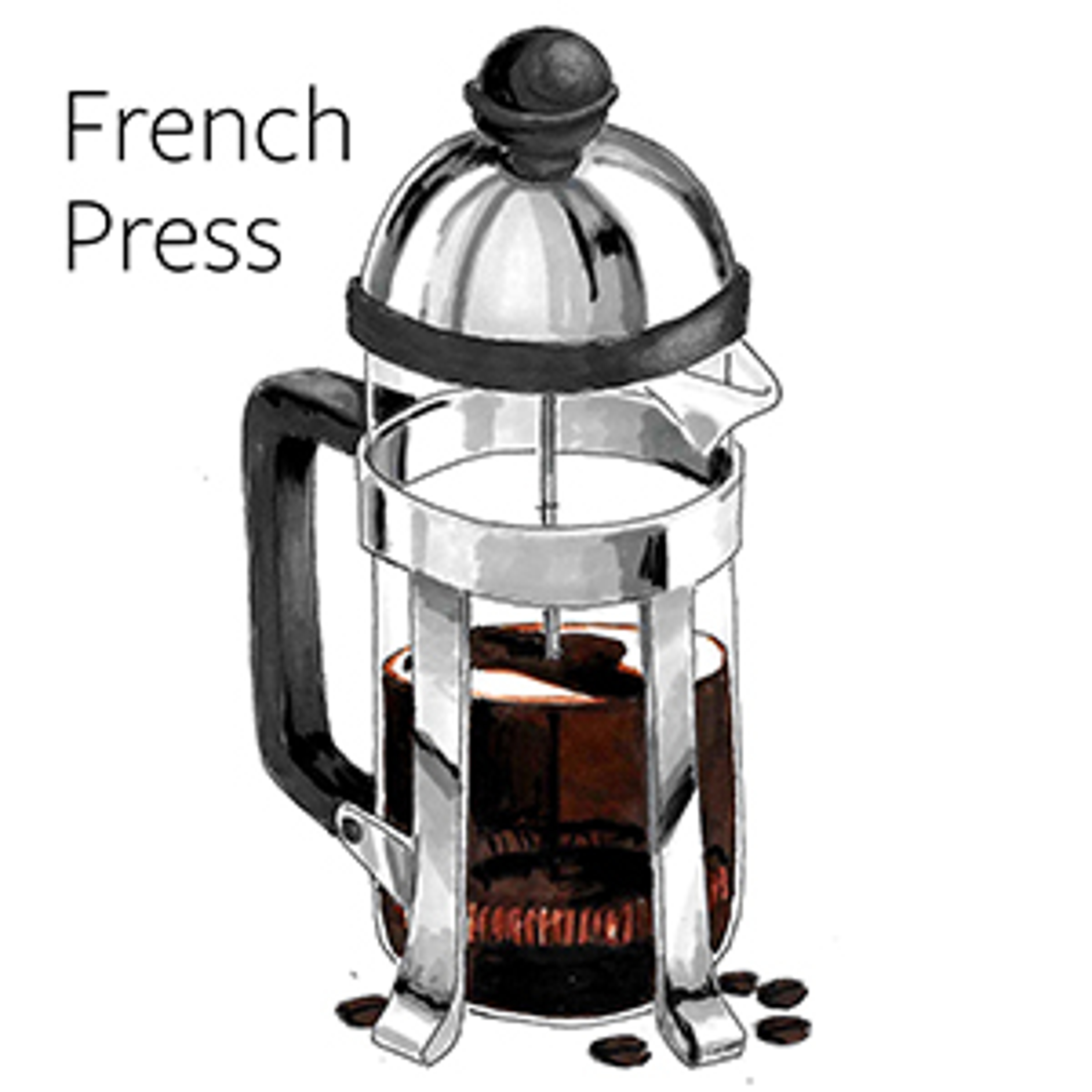
When German coffee lover Gottlob Widmann invented the Wigomat, the first electric drip coffee maker, in 1954, he revolutionized the coffee brewing process. Powered by a heated coiled wire, this machine works by forcing hot water up through a large tube and then releasing it onto coffee grounds that have been added to the tub at the top of the machine. The hot water then drips back down through the grounds — picking up the flavor —passing through a filter to remove any sediment, and ultimately landing back in the coffee pot, ready to drink.
It's an incredibly simple and effective process — and, using similar appliances, is the way most Americans brew their coffee today — but it doesn't give you much control over the coffee you brew, aside from pressing the “start" button.
For a more artisanal, homemade DIY cup of coffee, consider investing in a good French press, which consists of four basic, simple parts: a carafe, lid, filter, and plunger.
To make coffee in a French press, add hot water and coarsely ground beans to the carafe, and then let the mixture sit and steep for around two to three minutes — just long enough for the water to pull flavor from the coffee beans, creating a bolder, richer, slightly oily version of coffee that many people prefer over the machine-brewed kind. When the steeping is complete, simply press the plunger down, trapping the used coffee grounds at the bottom of the cup. Then sit back and enjoy the fresh, ready-to-drink coffee above.
START BREWING: Our Favorite Coffee Recipes
Ice, ice baby
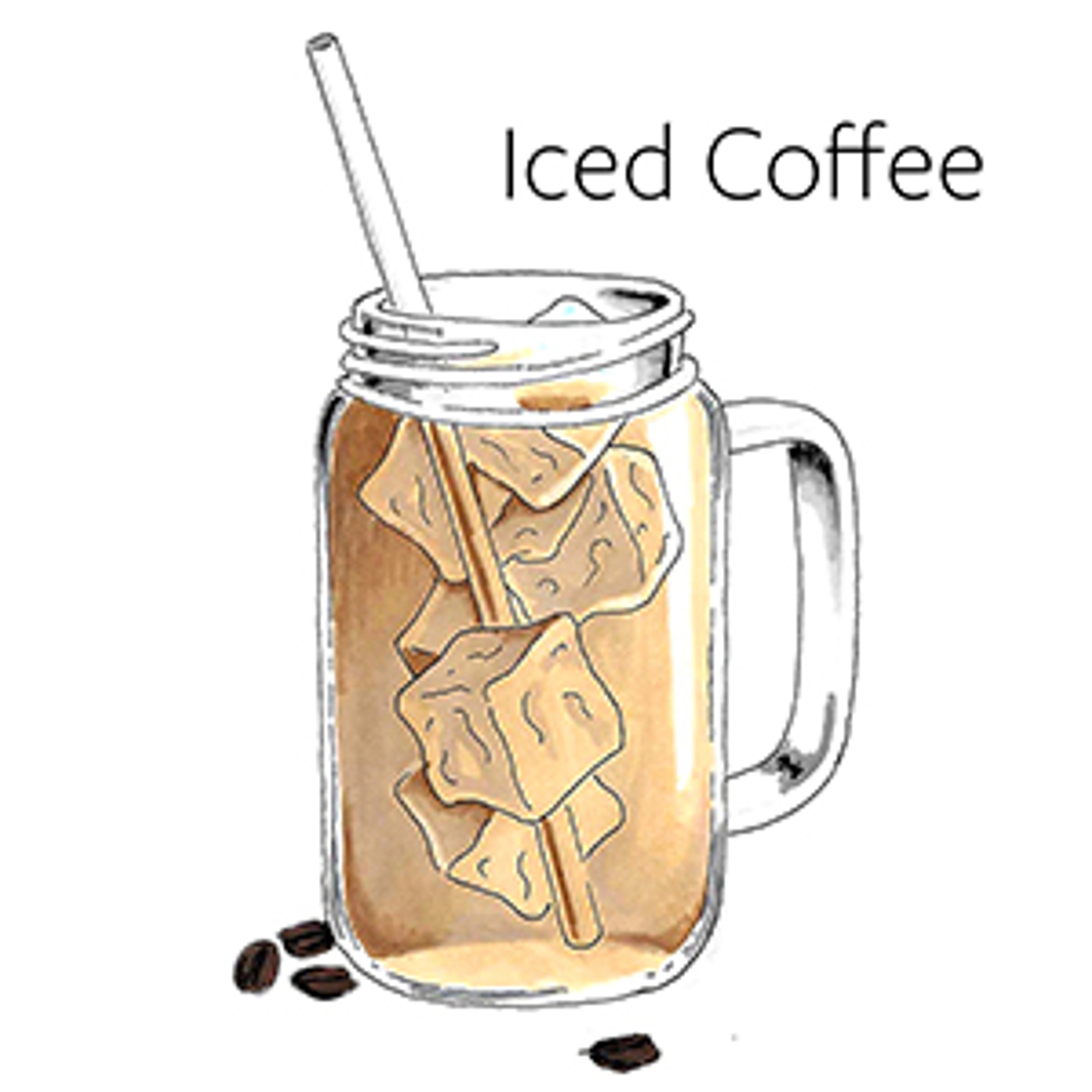
A perfect, refreshing, year-round drink option, iced coffee is simply brewed hot coffee that's been cooled and served over ice. But there's another option if you're in the mood for something chilled: cold brew.
Cold brew coffee has exploded in popularity in recent years, expanding from a $100 million industry in 2015 to a projected $950 million behemoth in 2025.
Crafted with cold water rather than hot, and allowed to sit and steep in the fridge or at mild room temperatures for 12 to 24 hours, cold brew coffee has a different flavor profile than its hot water cousin. It's smoother, less crisp and acidic, and has none of the burnt or scorched flavor notes that sometimes show up in hot coffee, says Michael Pocus, co-founder and COO of Domestique Coffee in Birmingham, Alabama. The extended steeping time also helps bring out sweeter, more nuanced flavors, such as chocolate, which you don't get with hot water, he says.
“Traditional iced coffee can taste weak, diluted, and watered down," Liu adds. “Cold brew rarely has those problems."
When it comes to making cold brew at home, you have two options: You can make ready-to-drink coffee, with a ratio of one part coarsely ground coffee to eight parts water, or you can make cold brew concentrate, with a ratio of 1-to-2 or 1-to-4 parts coffee to water. If you make concentrate, just add water to taste — you'll want to dilute your cold brew to just the right flavor and strength before serving.
Types of coffee drinks
Mastered the perfect cup? Now it's time to try your hand at these flavorful coffee variations.
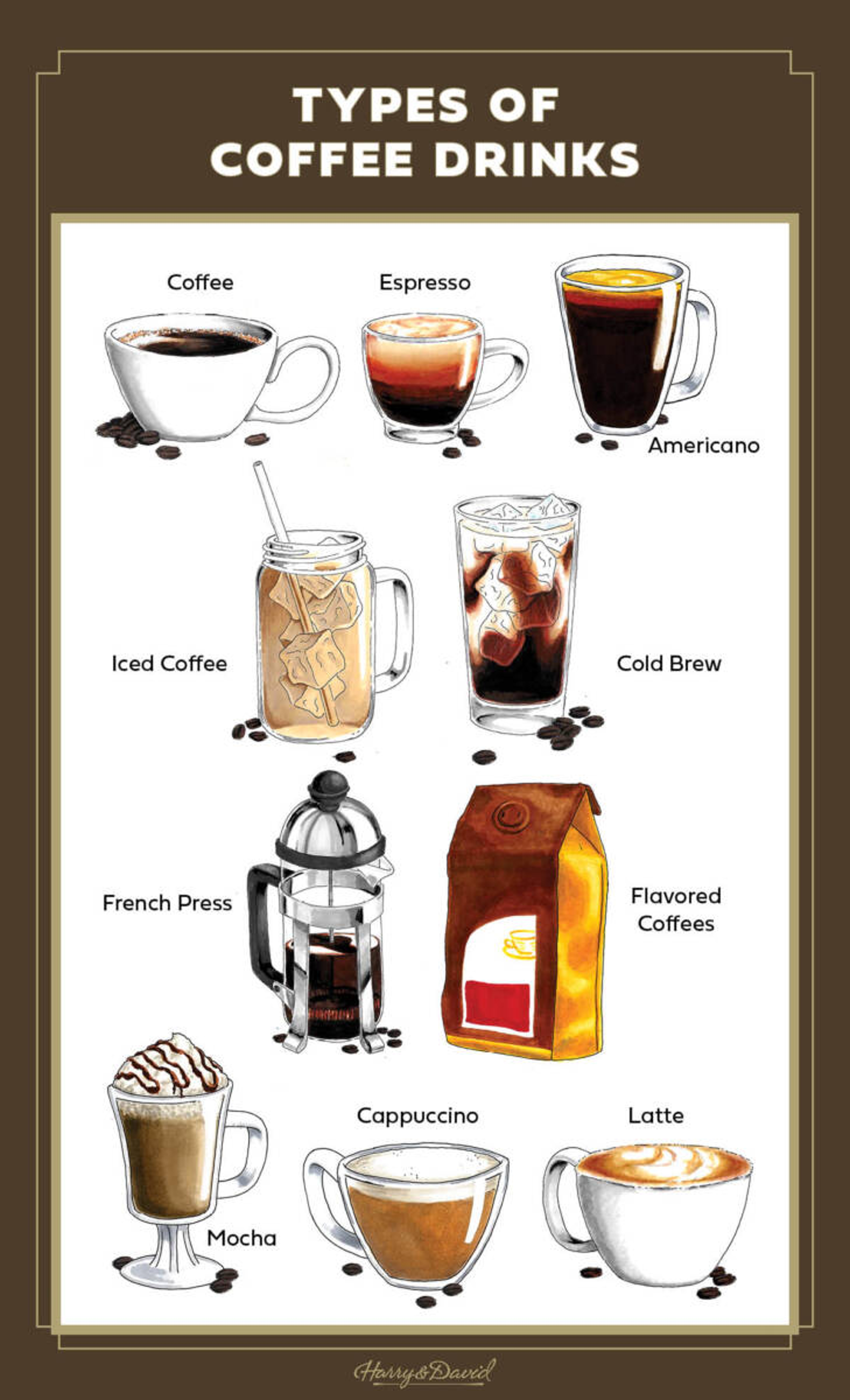
Espresso
Produced in a machine that forces steaming hot water first through a series of tubes and then into a mound of coffee grounds, espresso tends to have a richer, deeper coffee flavor than most standard coffees. (The manual levers used to power the original versions of these machines — and the “pressing" motions they required — ultimately gave this Italian favorite the name it still goes by today!)
Americano
Created by American soldiers stationed in Italy during World War II, this favorite of many coffee drinkers is essentially a serving of espresso diluted with hot water, usually in a 1-1 ratio.
Mocha
Just add chocolate! Take your favorite coffee recipe — usually a latte — and add some chocolate syrup or grated fresh chocolate to it (plus maybe a dash of whipped cream), and you've got an instant mocha.
Latte
This mixture of espresso and steamed, frothed milk can be served plain or with flavored syrups. If you don't have any special way to steam or froth your milk, simply heat it in the microwave for 20 to 30 seconds, until it reaches a temperature of approximately 150° (but no more). As for an ideal blend, aim for two ounces of espresso and three ounces of steamed milk, plus a bit of foam on top. You can't forget the foam!
Cappuccino
Like the latte, a cappuccino is another mixture of espresso milk and steamed milk, only this one has more dairy. The typical recipe consists of a 1-to-1-to-1 blend of espresso, milk, and foam.
Flavored coffees
Created by infusing coffee beans with flavors extracted from plants or spices, such as vanilla pods, cocoa beans, nuts or berries, flavored coffees are another way to enjoy your daily coffee habit while bringing a bit of delicious new flavor and variety to your taste buds.
Harry & David offers a variety of best-selling flavored coffees, all of which are made using 100% Arabica coffee beans, Whitticar says. (The majority of coffee beans out there come from two different plants: the Coffea arabica plant and the Coffea canephora plant — aka Robusta. Robusta coffee is incredibly bitter and is generally just used in instant coffee and espresso. Arabica is the world's most popular coffee type and the most widely consumed.)
“With our coffees, we strive to bring a different gourmet experience to our customers, providing unique, one-of-a-kind flavors that really elevate your coffee routine," he says. “Our most popular flavor throughout the year is our Moose Munch Milk Chocolate Caramel Coffee, which was inspired by our exceptionally popular Moose Munch Popcorn line. It contains a sweet and savory blend of chocolate, buttery caramel, and nut flavors, all of which will really brighten your morning."
“Chocolate Cherry Decadence is our second best-selling, year-round flavor. It's a great morning indulgence and the perfect coffee gift to share with someone special," Whitticar adds. “During the holidays, I recommend Harry's Christmas Blend, which combines incredible butterscotch and caramel flavors, and our Halloween Witch's Brew, which has a really unique and addictive orange cognac flavor that surprises a lot of people."
For a personal favorite, Whitticar says he loves to indulge on Northwest Blend, with its hints of hazelnut, praline, and cinnamon.
“I really enjoy making this as a cold brew," he says. "I don't like sugary drinks, so this is a great way to get the taste of something sweet without eating a doughnut or some other super-sweet dessert.
"I just add a bit of cream," Whitticar continues. "All our flavors are really best enjoyed with a little dairy, as it really helps bring out even more of their amazing flavors."
.svg?q=70&width=384&auto=webp)








